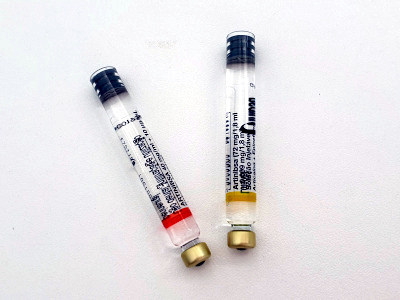What is dental anaesthesia?

Anaesthesia numbs a specific part of the body, or the entire body, by using anaesthetics during a surgical procedure. The person will not feel any pain, heat, or sensations of being touched.
In dentistry, both general and local anaesthesia are used.
Local Anaesthesia
The type used depends on the area or duration of the surgical procedure. Anaesthesia involves infiltrations into different areas, such as the upper and lower jaw.
This is the most commonly used for implant treatments, tooth extremities, and restorations.
Local anaesthesia with conscious sedation
Oral conscious sedation – This technique is recommended for anxious patients and has a minor calming effect. The dentist will prescribe anti-anxiety medication, and a sedative can be taken an hour prior to the consult in order to feel more relaxed during the treatment.
Conscious Sedation – This is carried out in the consultation office by an anaesthetist. Anaesthetic gas will be applied through a nasal mask. The gas dosage is monitored by a device and by the health professional. Dinitrogen oxide, or nitrous oxide, is a gas with a sweet smell that enables different levels of sedation depending on the quantity administered. This gas causes a state of well-being and the patient will be more cooperative as it influences brain activity. It is a widely used technique in Europe and in the United States, completely safe for adults and children.
General Anaesthesia
When local anaesthesia is not recommended, general is another option. The agent can be administered by an intravenous line (IV) or can be inhaled. In this case, the presence of an anaesthetist and a multidisciplinary team is mandatory. For zygomatic implants, it is the recommended procedure, as it will require admission to the hospital and the general anaesthesia that requires an anaesthetist.
The patient may be allergic to components used in local anaesthesia and, therefore, he or she will require general anaesthesia. The patient might not be cooperative or extremely difficult to convince. For this type, the medical risk factors need to be addressed, because local anaesthesia is not always advisable.
Are there any adverse effects ?
There are various types , with or without vasoconstrictor, which must be suitable for each specific case. For example, patients with high or untreated blood pressure, severe heart diseases, uncontrolled diabetes, and hyperthyroidism are subject to prior checks to determine which anaesthesia should be used.
If you are afraid to go to the dentist, have a look at the various types of anaesthesia that can fit your specific case. Our health professionals can help you to overcome this difficulty.
What is the origin of anaesthesia?
Inibsa is a pharmaceutical laboratory based in Portugal with over five decades of experience. It operates in the Portuguese market, distributing and providing high-quality products to patients. In the dental market, Inibsa provides excellent solutions regarding anaesthesia and we believe that they are leaders in this sector.
This company focused in dentistry provides a wide range of medication, exclusively dedicated to dentists. Only licensed clinics that are registered in Infarmed (National Institute of Pharmacy and Medicine) can buy dental anaesthesia in Portugal. Infarmed’s main aim is to regulate medication, cosmetic products, and medical devices such as dental implants. It is a public institution and under the Portuguese Ministry of Health, which regulates and protects people’s health.
Why is used?
Anaesthesia enables painless dental treatments. The health professional is able to perform the treatments in a fast, efficient, and safe way. Without pain, the dentist will conclude every necessary intervention and the patients will comfortably leave the office.
What type of anaesthesia do we use?
- Artinibsa w/EPI 1:100.000 and Artinibsa w/EPI 1:200.000
- Scandinibsa 2%, 3%
- Xilonibsa 2% e 3%
- Xilonibsa Spray
Some has active substances, such as epinephrine and articaine.
It is an injectable solution in capsules of 1,8 ml. Other such as xilonibsa consists of lidocaine hydrochloride with epinephrine. The product in sprayed on the gum to relieve pain.
Vita Center Medical Reference- Reviewed by VitaCentre Dental Clinic Staff on June 1, 2023

